
What is GMAT?
Updated on June 3rd 2025
Everything you need to know about the test format, scoring, registration, and price as of 2025.
The GMAT™ is everywhere when you are preparing to apply for business school. It’s a 2 hour and 15 minute (with one optional 10-minute break) multiple choice test from the Graduate Management Admission Council (GMAC). It is meant to judge just how prepared you are for an MBA. Questions test skills in mathematics, data analysis, writing, and problem solving. Your GMAT score is used by admission committees along with your work experience, grades, CV, interviews, and letters of recommendation to better judge if you are a good fit for an MBA, EMBA, Masters in Finance, or Business program.
HOW IS THE GMAT STRUCTURED
The GMAT is divided into three parts:
1. A 45-minute Data Insight section. - 20 multiple choice questions designed to test how well you read data. (scored from 0 to 90. An 83 is considered a good score for top schools and is better than 81 percent of test takers)
2. A 45-minute Quantitative section. - 21 multiple choice questions that test your ability to reason and make conclusions. (scored from 0 to 90. An 80 is considered a good score for top schools and is better than 84 percent of test takers)
3. A 45-minute Verbal section. - 23 multiple choice questions to test how you interpret written material and how well you can correct texts. (scored from 0 to 90. An 83 is considered a good score for top schools and is better than 84 percent of test takers)
| Section | Time | Number of Questions | Question Type | Skills Tested |
|---|---|---|---|---|
| Data Insights | 45 minutes | 20 multiple choice | Data analysis & interpretation | Reading and interpreting charts, graphs, and tables; making data-driven decisions |
| Quantitative | 45 minutes | 21 multiple choice | Problem-solving | Logical reasoning, math-based decision making, and quantitative analysis |
| Verbal | 45 minutes | 23 multiple choice | Reading comprehension & criticial reasoning | Understanding written material, and logical structure |
Before starting the test, test takers can choose the order in which they will pass the different sections. The following three options for the exam’s order will be available:
- Data Insights, Quantitative, Verbal
- Verbal, Quantitative, Data Insights
- Quantitative, Verbal, Data Insights
You can also choose to take one 10 minute break either after the first section or after the second section (but you can't do a break after both sections since you only get one break).
HOW IS THE GMAT SCORED?
Each of the four exam sections are given a scaled score and percentile rank. Then GMAT puts each of your scaled scores into an algorithm that determines your overall score. If you’re interested in seeing the composite scores that result from different GMAT section scores, try this GMAT Focus score calculator, created by our friends at GMAT Club.
Here are a few examples:
If you score an 83 on the quant section, an 83 on the verbal section and an 81 on the data insights section your overall score will be a 655 which is 91st percentile. This is equivalent to a 710 on the old GMAT scoring system (before the GMAT focus test started in 2024).
If you score an 80 on the quant section (64th percentile), an 83 on the verbal section (84th percentile) and an 82 on the data insights section (92nd percentile) your overall score will be a 645 which is 88th percentile. This is equivalent to a 700 on the old GMAT scoring system (before the GMAT focus test started in 2024).
When you finish the exam, you will be given an official score report usually within 2 to 5 business days that looks like this:
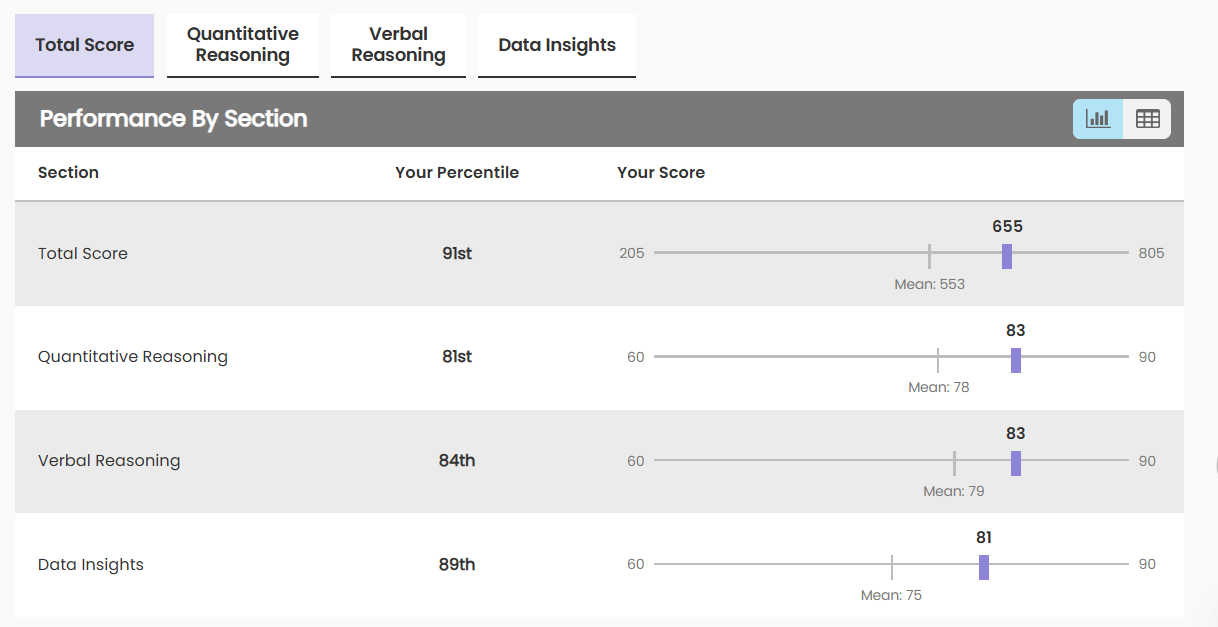
Your final score for the GMAT can fall from 205-805 points. Do keep in mind that it is not a pass/fail exam. At the end of the test, you receive a print out of your unofficial score if you take the test at a testing center or you'll see your unofficial score on your computer for a minute after you finish the test. Then they'll send you the official results a couple of days later (usually 2 to 5 business days unless they noticed something suspicious that happened during the test). If you don't get your results back within 5 days, don't worry. They've just increase security over the last two years and you'll likely get your official score within another week. In the event that you are not happy with your results, see if you have time to re-take the test at a later date. If you decide to retake the test later, you get to decide which score the schools will see. If you’re short on time, you should check with the programs that you’re applying to and see if they will accept the unofficial score while you wait for your official results to be published in your account on the official website mba.com.
What is a good GMAT score?
This depends on what school you want to get into and who your competition is. If you want to get into a top 20 business school, the average GMAT score is around a 655-665 (equivalent to a 710-720 on the old GMAT) . This doesn't necessarily mean that you have to score a 655 on the GMAT to get into a top school. After all, your competition might also be scoring below a 655. For example, there are fewer women candidates that apply to MBA programs than male candidates. In our experience, women can be admitted to schools with a GMAT score 20 points below an equally qualified male. If you're from an under-represented country or background you can also have a lower GMAT score. For example, we had a candidate accepted to a top 5 business school with a 555 on the GMAT. This was because of her unique background. We've also seen that there is often a cutoff around the 605 level on the GMAT.
|
The above percentiles were made available by GMAC for test takers between 2024-2025
THE Data Insights section (DI SECTION)
📊 GMAT Focus: What to Know About the Data Insights Section
The Data Insights section of the GMAT Focus Edition evaluates your ability to interpret and analyze complex data—and apply that analysis to real-world business problems. This section is especially valuable in today’s data-driven economy, as it also tests your digital and data literacy, one of the most in-demand skills for modern business professionals.
📐 What Does the Data Insights Section Include?
You’ll face 20 questions that challenge you to connect and evaluate different types of information—numeric, graphic, and verbal—to make logical, informed decisions. To tackle these questions, you'll use mathematical reasoning, data analysis, and verbal interpretation. An on-screen calculator is provided for convenience.
🧠 GMAT Data Insights Question Types
Understanding the five question formats is key to success:
1. Data Sufficiency
-
Assess your ability to analyze quantitative problems.
-
Determine what data is needed and when there's enough to solve the problem—a key skill in data-driven decision-making.
2. Multi-Source Reasoning
-
Evaluate data from multiple formats—text passages, tables, and graphics.
-
Identify discrepancies, draw conclusions, and determine relevance across data sources.
3. Table Analysis
-
Analyze sortable data tables (similar to Excel spreadsheets).
-
Identify which data points meet specific conditions or answer targeted business questions.
4. Graphics Interpretation
-
Interpret visual data from charts, graphs, or statistical plots.
-
Make inferences and spot relationships between variables.
5. Two-Part Analysis
-
Solve complex problems involving quantitative and/or verbal reasoning.
-
Evaluate trade-offs, analyze relationships, and even solve simultaneous equations using a dual-response format.
🎯 Why the Data Insights Section Matters
Success in the Data Insights section shows more than just test readiness—it reflects your ability to handle the kind of data analysis and strategic thinking required in MBA programs and modern business environments. Whether you're analyzing financial models, market research, or operational data, these skills are crucial.
Example questions:
Data Sufficiency Question
Directions:
This data sufficiency problem consists of a question and two statements, labeled (1) and (2), in which certain data are given. You have to decide whether the data given in the statements are sufficient for answering the question. Using the data given in the statements, plus your knowledge of mathematics and everyday facts (such as the number of days in July or the meaning of the word counterclockwise), you must indicate whether:
- Statement (1) ALONE is sufficient, but statement (2) alone is not sufficient to answer the question asked.
- Statement (2) ALONE is sufficient, but statement (1) alone is not sufficient to answer the question asked.
- BOTH statements (1) and (2) TOGETHER are sufficient to answer the question asked, but NEITHER statement ALONE is sufficient to answer the question asked.
- EACH statement ALONE is sufficient to answer the question asked.
- Statements (1) and (2) TOGETHER are NOT sufficient to answer the question asked, and additional data specific to the problem are needed.
Question:
What is the monthly rent for a certain apartment?
(1) The monthly rent per person for 4 people to share the rent for the apartment is $375.
(2) The monthly rent per person for 4 people to share the rent of the apartment is $125 less than the monthly rent per person for 3 people to share the rent.
(A) Statement (1) ALONE is sufficient, but statement (2) alone is not sufficient.
(B) Statement (2) ALONE is sufficient, but statement (1) alone is not sufficient.
(C) BOTH statements TOGETHER are sufficient, but NEITHER statement ALONE is sufficient.
(D) EACH statement ALONE is sufficient.
(E) Statements (1) and (2) TOGETHER are NOT sufficient.
Answer: (D)
Multi-Sourced Reasoning question
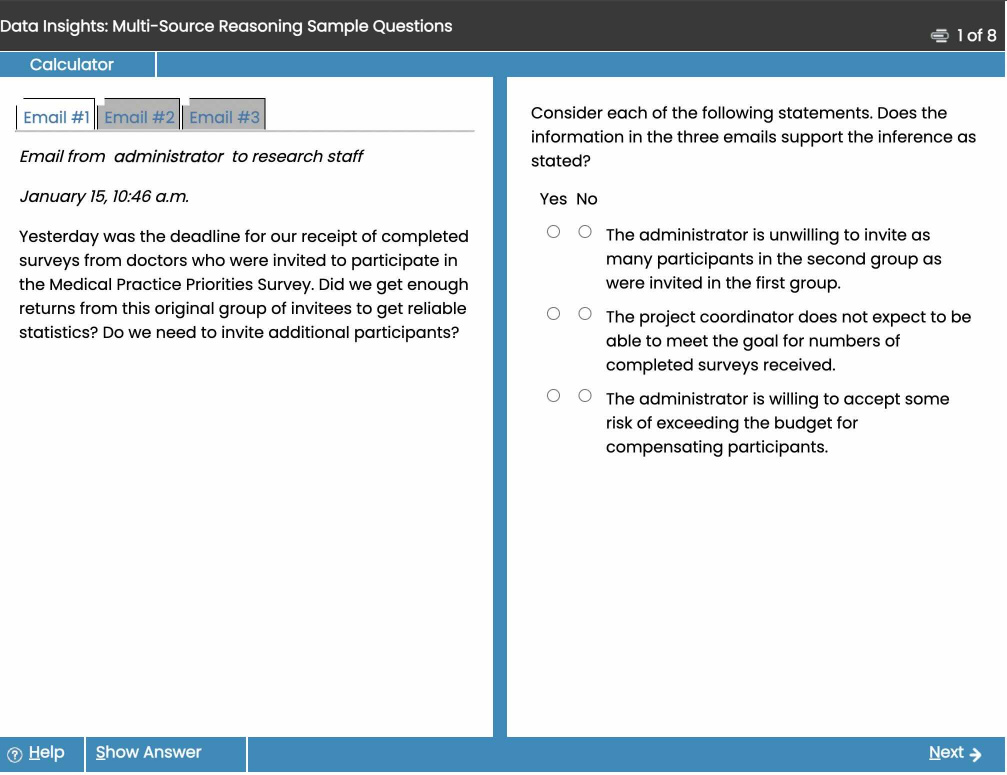
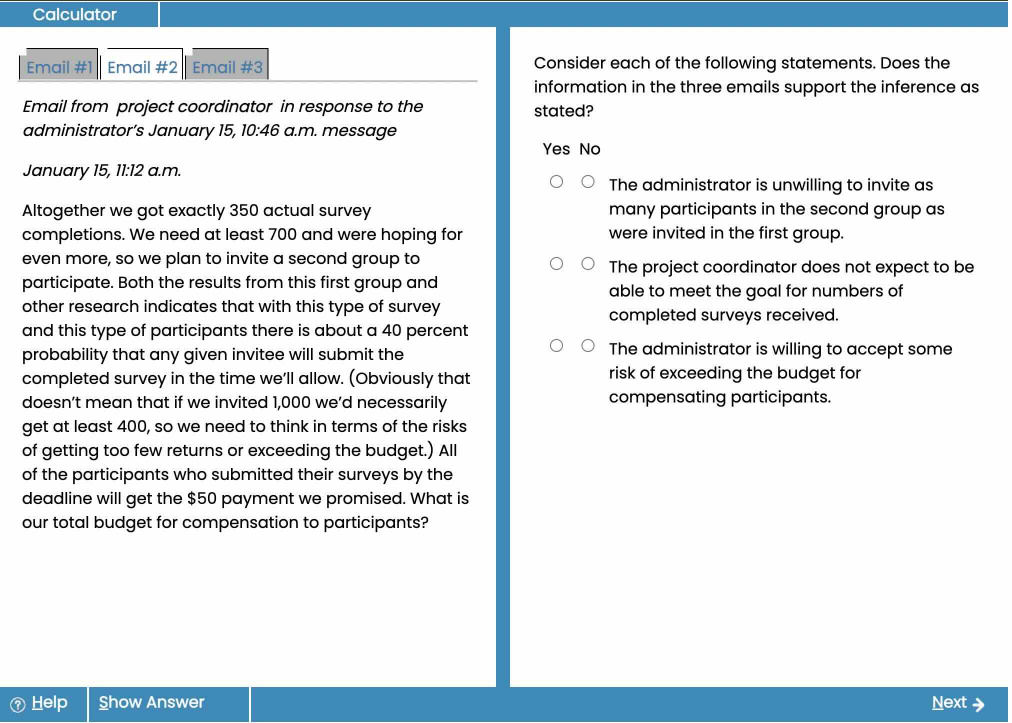

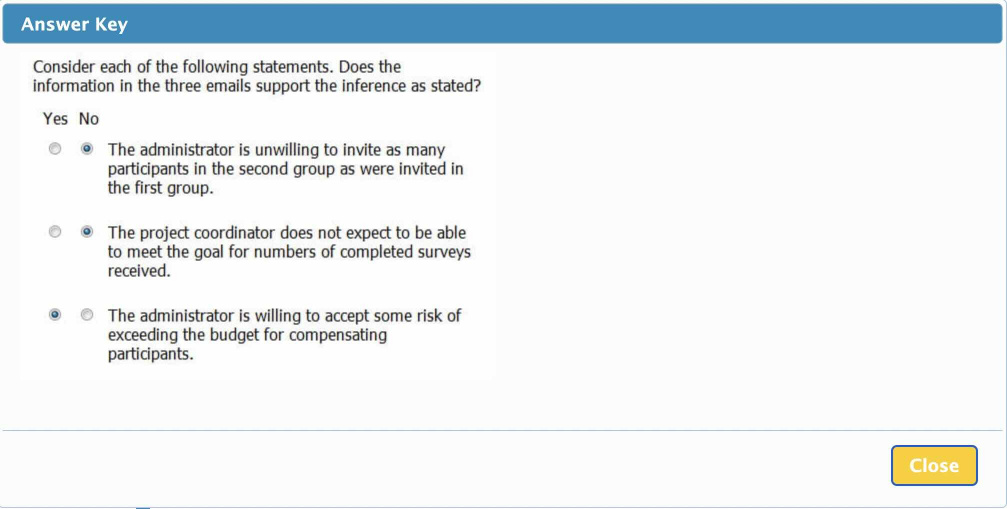
Table Analysis Practice Question
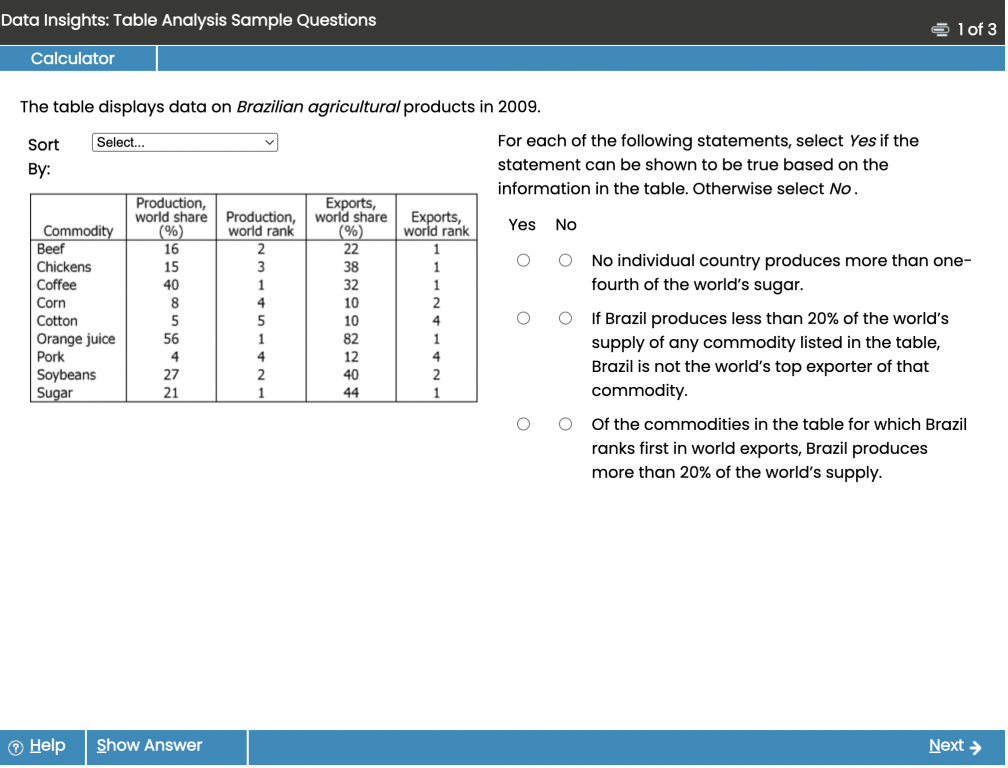
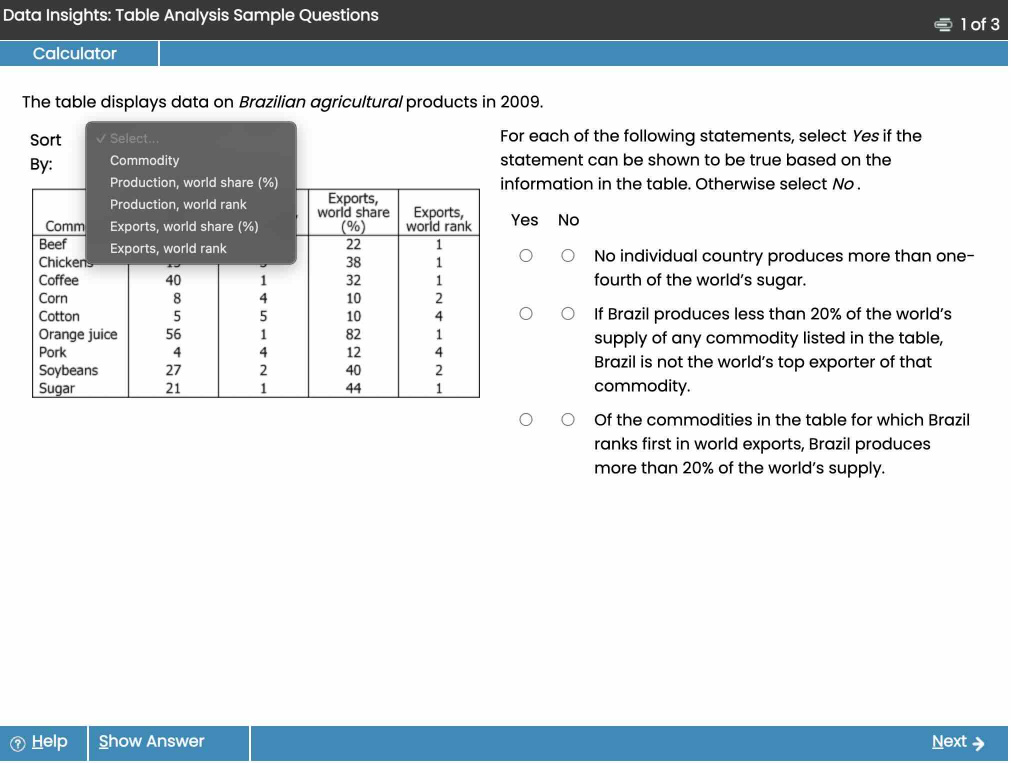
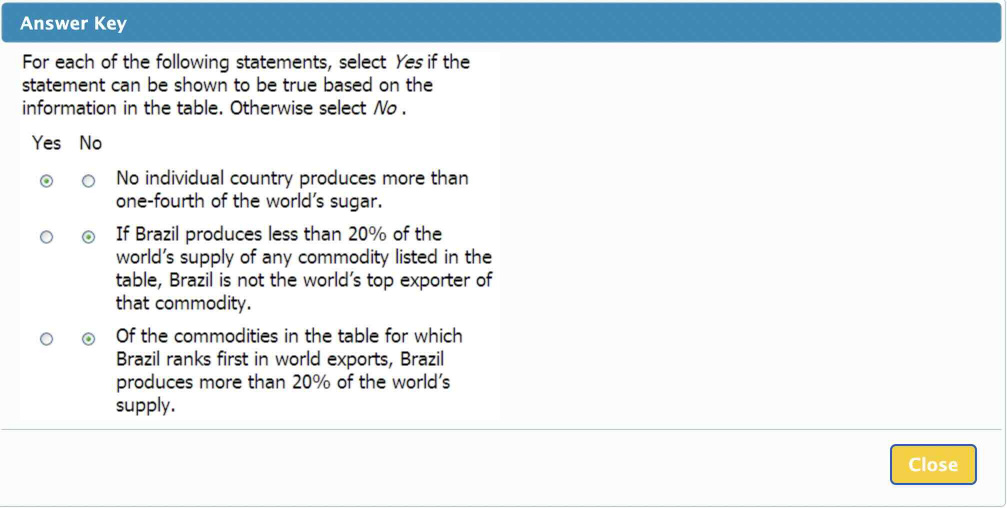
Graphic interpretation Practice Question
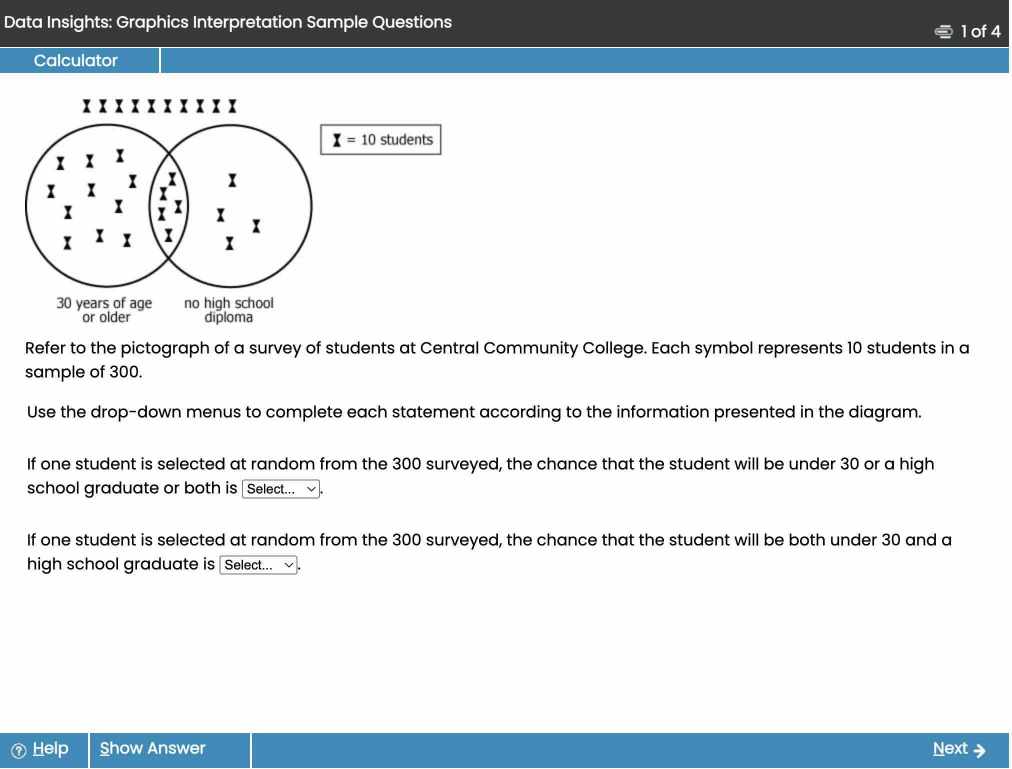
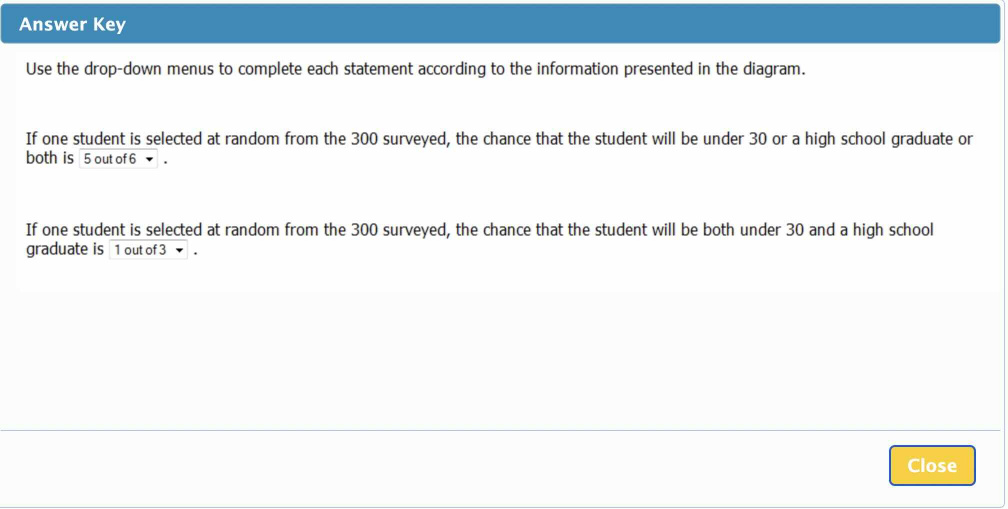
Two part Analysis Sample Question
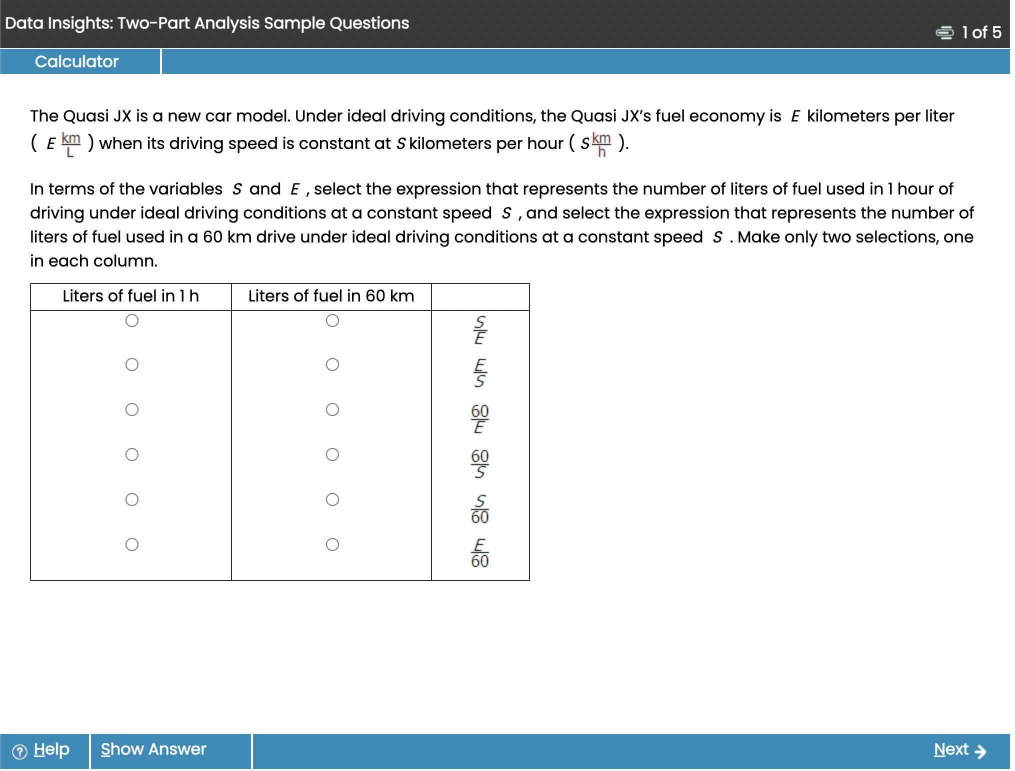
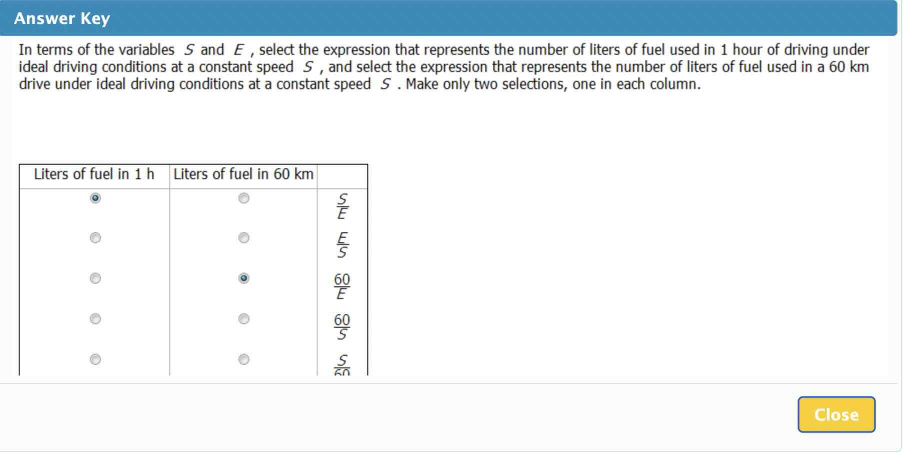
THE QUANTITATIVE AND VERBAL SECTIONS ON THE GMAT
With the GMAT focus exam (which is just called the GMAT as of 2025) The final overall score between 205-805 points comes from not these two parts of the exam but also the Data Insight section. In the past, only the Quant and verbal section really mattered, but now all three sections are important.
In the Quantitative section, test takers must think mathematically, solve quantitative problems, and interpret graphs. In this section, there is only one question type: problem solving. However, inside of the single question type are about 20 different subjects including fractions, percentages, statistics, probablity, and so on.
Problem Solving on the GMAT
Here test takers must use analytical reasoning to find the answer to quantitative problems, then select the best answer amongst five answer choices.

See the problem solving answer here. Or contact us for a full free online test and personalised analysis by our GMAT coach who has more than 15 years of experience.
Verbal Reasoning section on the GMAT
In this section you will show how well you are able to grasp a text by examining its arguments. You will then be asked to analyze or correct written material in order to better express an idea.
There are two types of questions: Reading Comprehension, and Critical Reasoning.
Reading Comprehension on the GMAT
Here you will be given a passage that comes with questions asking you to identify main ideas and supporting details, interpret the material, and then infer your own conclusion. The passage could discuss a range of topics, anything from social science, the humanities, physical science, or business.
Example:

Questions 1-3 refer to the passage above.

See the answers to the reading comprehension questions here. Or contact us for a full free online test and personalised analysis by our GMAT coach who has more than 15 years of experience.
Critical Reasoning on the GMAT
Here you must formulate arguments, evaluate a given argument, or develop a plan of action in response to a short reading passage. The text is usually no more than 100 words and is followed by a question that asks you which of the five answers supports or disproves an argument.
Example:
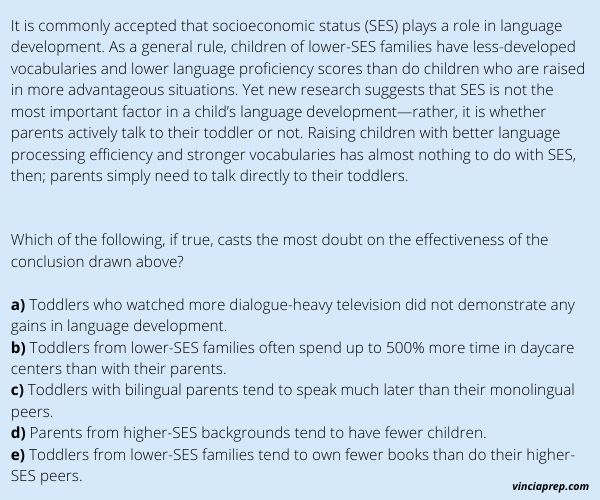
See the answer to the Critical reasoning question here. Or contact us for a full free online test and personalised analysis by our GMAT coach who has more than 10 years of experience.
WHAT IS A COMPUTER ADAPTIVE TEST?
A unique part of the GMAT is that the Quant and Verbal sections are computer adaptive. This means that the questions adapt to your ability level. In other words, the test becomes easier or harder based on your answers. Wrong answers will lead to simpler questions. Correct answers will lead to tougher questions. It is impossible to go back and change an answer once submitted. Any unanswered questions will count against you. A special algorithm is used to count the final score. This algorithm doesn't just consider the accuracy of each answer. It must consider the difficulty level of each question. The more difficult questions you answer right, the better.
WHAT IS A GOOD STRATEGY FOR THE GMAT?
Strategy and thorough preparation are both essential when taking the GMAT. Skipping questions is allowed but we don't generally recommend it because the program will treat your answer as initially incorrect and then only give you partial credit if you get the answer right later on. Educated guessing is an important part of taking the test. The most important thing to remember is to pace yourself. You do not want to waste time answering questions that you find difficult.
On average, you should spend your time this way:
- 2 minutes/question on the math section
- 2 minutes/a critical reasoning question
- 6 to 8 minutes/a reading comprehension passage (3 to 4 questions)
Leaving the exam with unanswered questions will negatively impact your final score. The test penalizes you two times for not completing the exam. Once for getting the questions wrong, and then a second time for not finishing. They do this because you should always try to guess the answers to the questions. If you don’t, they want to penalize you for not thinking about this properly. The computer adaptive aspect to the GMAT is a serious challenge. The good news is that the skills tested by the exam can be developed over time.
WHEN SHOULD I REGISTER FOR THE GMAT?
For GMAT registration, September to February is the busy season. This is because the 2nd round of most Fall deadlines for MBA and Masters programs are in January (for MBA programs) to March (for Masters programs in Europe). Generally speaking, you don’t want to apply after the second round. The exam can be taken any day of the week in most places (including Sunday). In theory, you can register anytime 24 hours prior to the exam. However, there are limited places for each testing session, especially if you want to take the test at a center. It's best to register at least 1 month in advance during the off-season, and at least 2 months in advance during the high season if you want to take the test in person at a center. On the other hand, if you want to take the test online, there are tons of availabilities so you only need to register for the exam a couple days in advance. You can take the GMAT once every 16 days, up to 5 times within a year and there is no longer a limit to the number of times you can take the test (it used to be 8 times before 2025).
HOW MUCH DOES THE GMAT COST?
Registration for the GMAT costs $275 at a testing center/$300 online in the US and as of June 2025 (before taxes)
Registration for the GMAT costs 275 euros at a testing center/ 300 online in most of Europe (before taxes)
Your GMAT scores are valid for 5 years. So, if you just finished school or you’re in between jobs, now is a great time to start studying. You can always use the results years later.
HOW DO I REGISTER FOR THE GMAT?
To register you’ll need to follow the following steps:
- Step 1: Sign up on www.mba.com/exams.
- Step 2: Start the GMAT registration process.
- Step 3: Enter your personal information.
- Step 4: Enter optional information.
- Step 5: Verify Your Profile.
- Step 6: Find a GMAT center near you using their testing center finder
- Step 7: Schedule your GMAT exam
- Step 8: Pay the GMAT registration fee
One of the annoying points about registering for the GMAT is that they don’t tell you where the testing centers are until after you create your account and start the registration process. To find other testing centers in France, Belgium, and England you can look at our article about GMAT testing centers . In Paris you can take the GMAT at one of these locations:
IBS GLOBAL
42-52 Rue de l'Aqueduc
75010 Paris
Paris, France
Phone:
+33 1 42 80 38 39
Pearson Professional Centres-Paris, France
15 rue Henri Rol-Tanguy
TERRA NOVA II Building
5th Floor
93100 Montreuil
Paris, France
Phone:
+33 1 43 62 30 90
Furthermore, our previous students have told us that the testing center in Montreuil is calmer and generally nicer. If you’re taking the test in Paris, you should try to enroll there.
Can I postpone or cancel my GMAT exam after I register?
Yes, you can postpone or cancel your exam after you register for the GMAT. If you postpone your exam you will have to pay a fee between $50 and $150. If you cancel you’ll have to pay between $150 and $200. The exact fees are shown below. However, in France, there is the a retraction law that states that you can get a refund within 14 days of making any purchase without a contract. In the past several years we have had students successfully get a full refund after using this law even though they were initially told they would be charged a fee.
Reschedule Fee Tiers:
- 1 to 14 days prior to appointment: $150
- 15 to 60 days prior to appointment: $100
- More than 60 days prior to appointment: $50
Cancel Fee Tiers:
- Within 24 hours of appointment: $275 (no refund)
- 1 to 14 days prior to appointment: $200 ($50 refund)
- 15 to 60 days prior to appointment: $175 ($75 refund)
- More than 60 days prior to appointment: $150 ($100 refund)
How long does it take to get your GMAT results?
After you take the test, you’ll immediately see your score out of 805 and the testing center will print out your unofficial report card. This is report is often accepted by most schools until they receive your official report which generally takes 2 to 5 business days from the test date to arrive. If you don’t like your score, you can cancel it and the school’s you apply to will never see the results. Or you can keep your result and retake the test and then choose which scores you'll send to schools.
Ready to get started?
So you've started to study a little. You have maybe a GMAT app on your phone. Maybe you bought a GMAT prep book, but are you ready to take it to the next level? Consider private tutoring or a group class! Along with our GMAT group class you'll receive all of the study material you'll need, a 2 hour course for the TOEFL, a 2 hour lesson for your school application, 4 hours of private tutoring and a 70 point increase guarantee!
Contact us for your a full free practice test, and a personalised analysis and study plan by our top GMAT coach who has more than 15 years of experience




